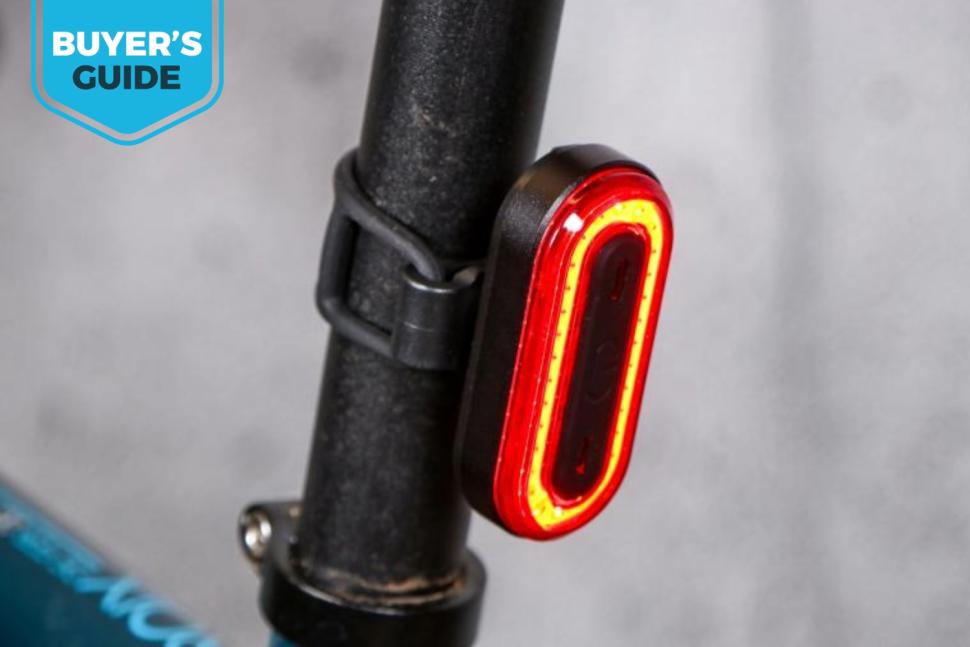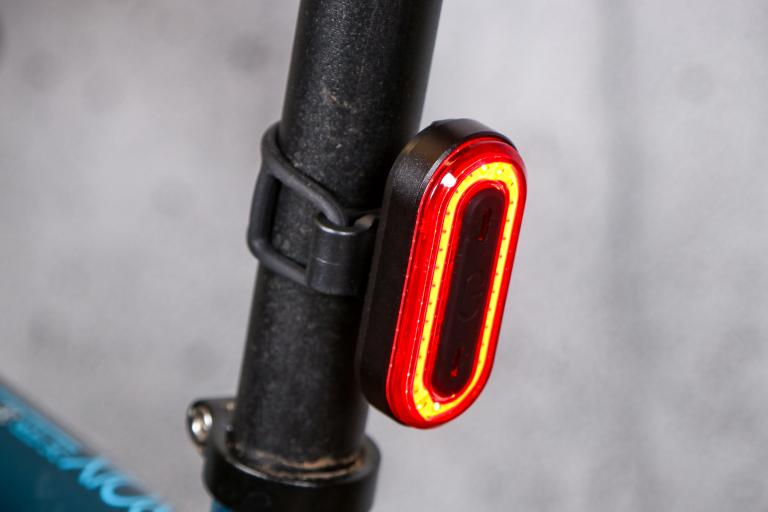Over the years we've clocked up thousands upon thousands of cold, dark winter road miles to test hundreds of rear lights. These are the best rear bike lights you can buy, from brilliant budget beamers to retina-ripping radiants that demand even the dopiest driver's attention.

Best overall: Exposure Boost-R with ReAKT and Peloton

Best money-no-object: Garmin Varia RTL515

Best budget rear light: ETC R65 65 Lumen USB Rear Light

Best rear light for brightness: Cateye Viz 450 Rear Light

Best affordable rear light: Gemini Juno 100 rear light

Best for extra visibility: Brightside Bright, Amber and Sideways

Best combined helmet light: Exposure Link DayBright MK2

Best rear light with a camera: Techalogic CR-1 Rear Light with HD Wide Angle Camera

Best for commuting: Kryptonite Incite XR USB Rear

A more affordable rear smart light: Bryton Gardia R300L Rear View Bike Radar Tail Light

Best super bright rear light: Lezyne Zecto Drive Max 250

Lightest road.cc-recommended rear light: Knog Plus Rear Light, Black

Bets mid-priced rear light: Giant Recon TL 200 rear light
A rear light is a legal requirement when cycling at night, and using one that's brighter than the legal minimum seems like a sensible way of helping drivers see you — or at least defanging 'but I didn't see them' excuses. The best bike rear lights have long run-times, can be seen from a good distance, and are sufficiently tough and waterproof to fend off day-to-day abuse.
Cycling rear lights universally use one or more red light-emitting diodes (LEDs) to generate their light. LEDs are very efficient, putting out lots of light for modest electrical power, which makes them cheap to run but effective at boosting visibility. Most rear bike lights are now rechargeable, taking power from a USB source like a standalone charger or your office computer. Battery-powered lights are still available and have their adherents who appreciate being able to revive a dead light at any filling station or corner shop.
A flashing red light says 'bike' to most drivers; we recommend using a constant light as well so your position can be easily followed. It can be hard to track the position of a flasher on an otherwise unlit minor road. Rear bike lights are increasingly intended as day-time safety lights too, with super-bright flash or pulse modes designed to be impossible for drivers to ignore. They can be very annoying to other riders though; please use them only when necessary.
If you want to see our top picks of back, front and combined lights all in one place, you can also check out our overall guide to the best bike lights. Just looking for a front beam? Head on over to our guide to the best front bike lights instead.



























Add new comment
12 comments
I'm normally commuting with a Carradice saddlebag, so can't use seatpost-mounted lights as they're obscured. It would be useful in your reviews if you mentioned whether lights come with either a seatstay mount (eg most Cygolite taillights have both seatpost and seatstay mounts in the box) or a belt clip that will fit the mounting strap on saddlebags.
I use a NiteRider Sabre clipped onto the back of my rucksack. It has a big clip, never had any retention problems. In fact use it there so much I'm not sure where the actual mounting bracket is!
The Knog+ ('lightest rear light') has a decent looking clip. The actual bracket for it works with magnets and gets good reviews.
I am considering the Knog Blinder Link, the saddle rail version. As a bit of an extra, and to lower my Hope District+, as I can with my mudguards.
I did want something to go on the right hand seat stay, a Moon, but the weatherproofing seemed somewhat inadequate, and I was unsure of the fixings.
The Knog has a USB C, which will mean I need another cable as this will be the first for my lights...
the Cateye Viz is frustrating me. It comes with a plastic mount that you slide the light into, then you wrap a rubber block over the mount, which stops the light from sliding out. Then you use the rubber "ladder" to hold the light to the seat post.
Two problems I've found:
Eh? You just take it off and charge it, no need to dismount it.
Not following the second point - the ladder end locking is independent of the orientation.
The image on the left is how you have to have the rubber block to slide the light in and out, the the part you slide the light out of is how it is held onto the seat post - so you would have to pull it away from the seat post and push the rubber back (as i have in the photo) and then slide the light out.
The image on the right is the light put in horizontally - the tag is pushed out by the light and makes me worried it'll slip out of the mount.
I see what you mean now - I have one of those but use it on a Brompton with the proprietary Brompton seat mount, which allows it to slide in and out easily. I've just dug out the original mount like yours and it's just as you say. One solution for off-bike charging perhaps would be to get an alternative mount? The Cateye square mount is fairly common and there should be others available.
Something like this
https://www.sjscycles.co.uk/lighting-spares/cateye-sp11-flex-tight-brack...
I wasn't envisaging you making it horizontal on the seat post, I thought you were using it elsewhere as horizontal.
I've just tried and you can slot the light on afterwards if you want horizontal and the retaining tab in the square mount will hold it. I needed an allen key to move the tab to get the light out.
Hmm, although I don't use that mount any more and I'm now wondering if I've lost a bit !
EDIT
Apologies, I have found the missing bit and now I understand the issue. What is even more bizarre is the site shows the horizontal placement as an option with no reference how it is very hard to get it on.
USB-C is now a must, when will we see more manufacturers implementing this...
But why I hear you cry..
1) No right or wrong way up so no bent connections
2) Higher amp bandwidth means faster charging
3) future proof (until the next better thing sticks at least)
Amen. At this point it's a no-brainer. It would be helpful if the charging port could be in the first line of the review, could save a lot of wasted reading!
USB C is a bit of a mixed bag, sometimes it means what you say, like higher charging current and quicker charging times but all too often USB C charging protocols aren't observed so none of those benefits are actually available, and in many cases a compliant USB C charger won't charge your light at all. The USB C plug is certainly better than micro usb though.